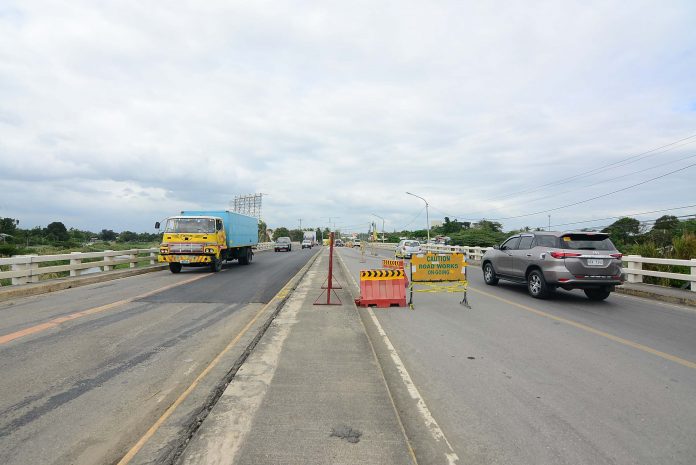
ILOILO – Under fire for the slow repair of Aganan Bridge in Pavia town, the Department of Public Works and Highways (DPWH) yesterday reopened it to traffic. Work on the defective side used by people and vehicles going to Iloilo City from the Iloilo Airport had been completed, according to Assistant Regional Director Al Fruto.
How long would the repaired side last?
Fruto said DPWH would be conducting a “thorough assessment of the structure’s integrity.”
F. Gurrea Construction did the repair, according to Fruto, at no expense on the part of DPWH.
F. Gurrea Construction was the DPWH contractor that built this side (two additional new lanes) of the once two-lane Aganan Bridge only some five years ago.
Asked why this side of the bridge needed constant repair in recent years despite being relatively new, Fruto said the cement may be “weak.”
He, however, recalled that when F. Gurrea Construction turned the bridge over to DPWH after construction, these two additional lanes seemed well-built.
Fruto said DPWH and F. Gurrea Construction had an understanding that the contractor would be repairing the two lanes it constructed should there be a need for it, at no cost to DPWH.
Is this arrangement a tacit admission that the expanded Aganan Bridge was poorly constructed?
Fruto just let out a hearty laugh.
Repair of the Aganan Bridge started late last year although it had been showing signs of deterioration for months prior. This angered a lot of people who took to social media to vent their frustration.
The bridge was reopened at 5 a.m. yesterday.
Fruto also said while Aganan Bridge has a weight limit of 20 metric tons, vehicles exceeding such weight cap could still pass by the bridge.
He, however, stressed it is not DPWH that regulates vehicles using bridges but local government units, and in the case of the Aganan Bridge, the municipal government of Pavia.
The structural integrity assessment would be conducted before this month is over, said Fruto.
One possible test is the so-called rebound hammer test – a non-destructive testing method of concrete which provide a convenient and rapid indication of the compressive strength of the concrete. The rebound hammer is also called as Schmidt hammer that consist of a spring controlled mass that slides on a plunger within a tubular housing.
Rebound hammer test method is based on the principle that the rebound of an elastic mass depends on the hardness of the concrete surface against which the mass strikes. When the plunger of rebound hammer is pressed against the concrete surface, the spring controlled mass in the hammer rebounds. The amount of rebound of the mass depends on the hardness of concrete surface.
Thus, the hardness of concrete and rebound hammer reading can be correlated with compressive strength of concrete.
Another possible test is the core test which is generally performed to assess whether suspect concrete in a new structure complies with strength-based acceptance criteria or not./PN





